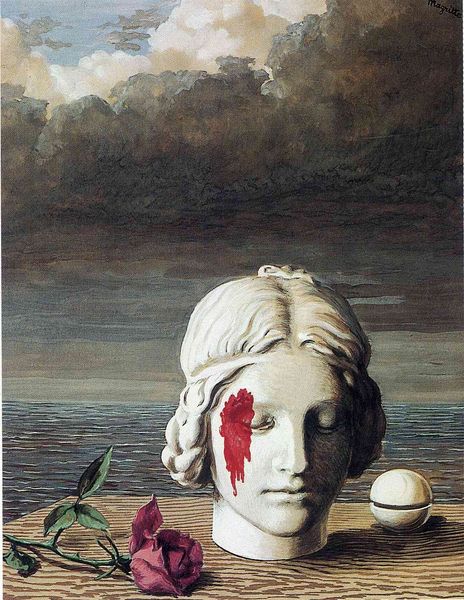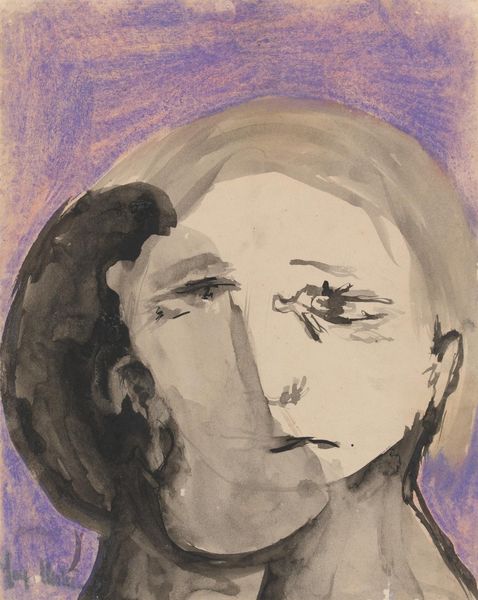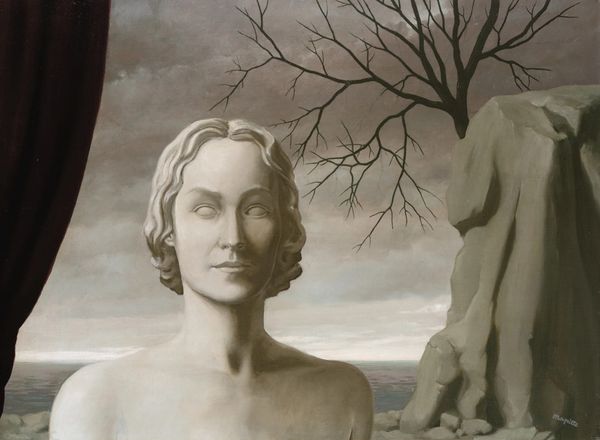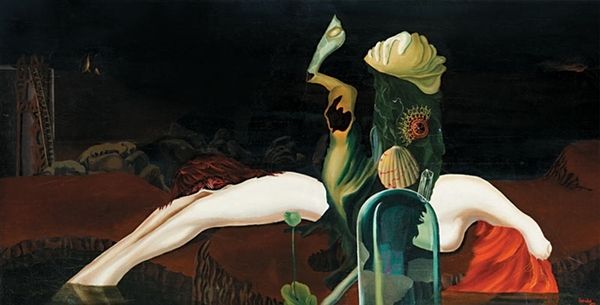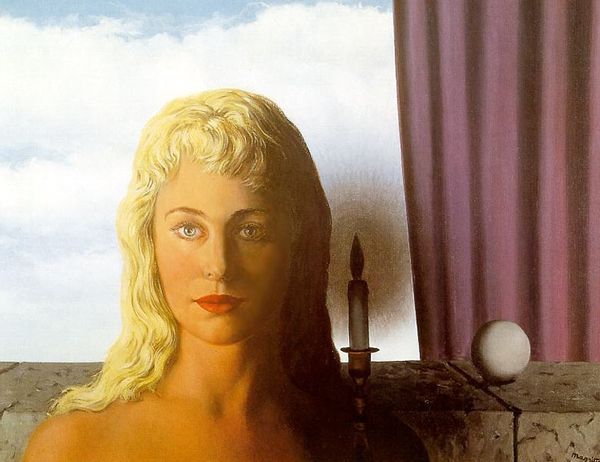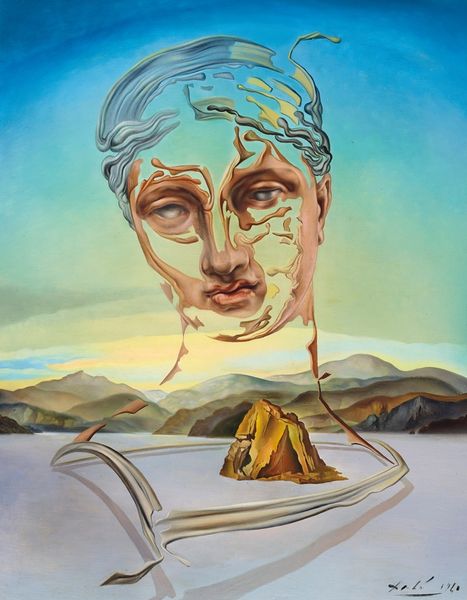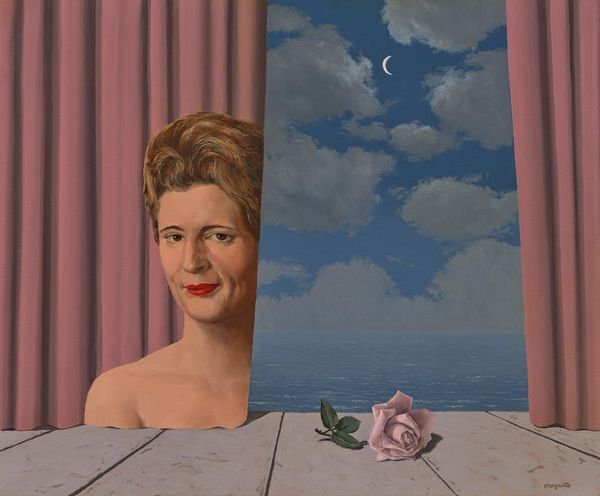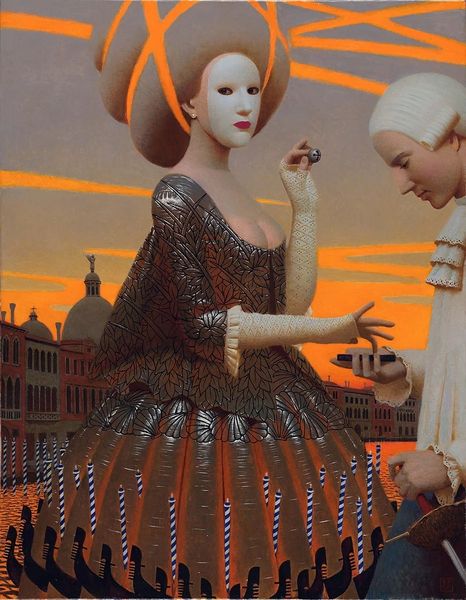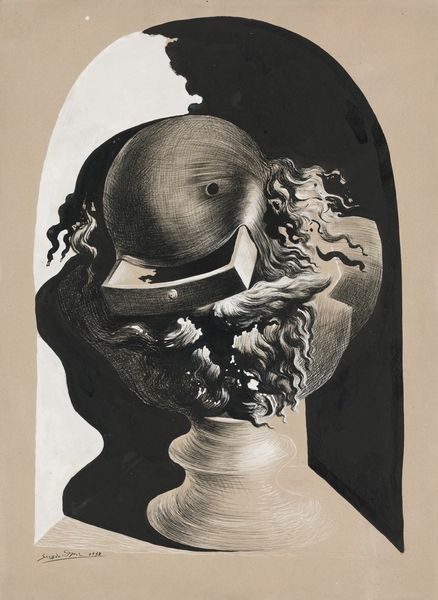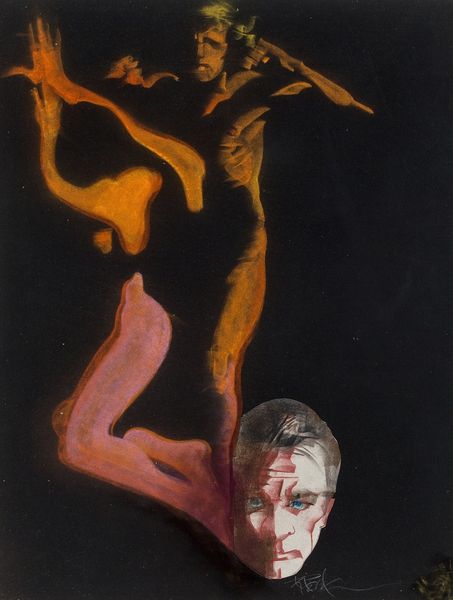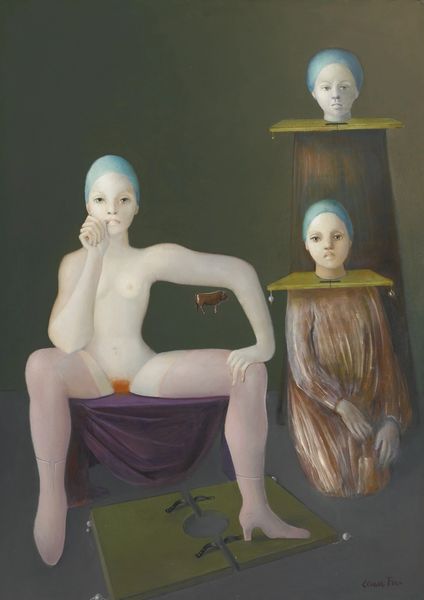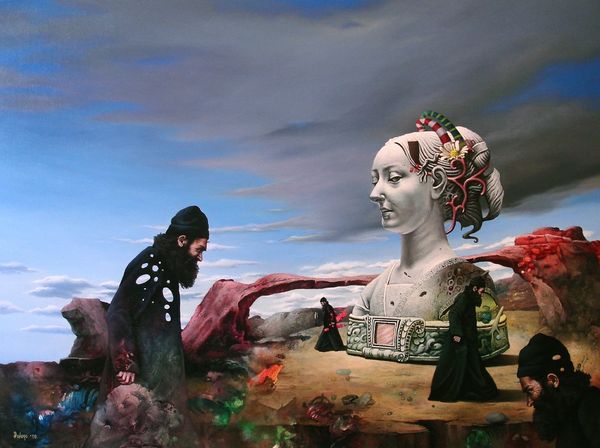
tempera, oil-paint
#
portrait
#
tempera
#
oil-paint
#
oil painting
#
surrealism
#
portrait art
#
modernism
#
realism
Copyright: Modern Artists: Artvee
René Magritte's painting presents us with a disquieting still life dominated by a classical bust with a crimson stain obscuring its eye. The smooth texture of the bust contrasts starkly with the mottled sky, the orb of the sun, and the rough nest containing three eggs. Magritte masterfully juxtaposes elements of the familiar with the strange, a strategy central to surrealism’s project of unsettling bourgeois complacency. The classical bust, typically a symbol of enduring beauty and tradition, is here defaced, challenging fixed meanings. The eggs in the nest suggest fertility and potential, yet their placement alongside the wounded bust creates a tension, questioning notions of creation and destruction. This interplay destabilizes our conventional understanding of symbols, inviting a semiotic reading where signs are not fixed but fluid, open to reinterpretation. The curtain behind the bust adds a theatrical dimension, framing the scene as a stage where memory is not a stable recollection, but a performance, continually reshaped. Ultimately, it is the painting’s formal structure, the careful arrangement of contrasting textures and symbolic elements, that compels us to reconsider the nature of memory itself, not as a static entity, but as a dynamic and enigmatic construct.
Comments
No comments
Be the first to comment and join the conversation on the ultimate creative platform.
